Survival Shelter – The Amazing Technology Behind the Igloo

Almost everyone is familiar with the Igloos of the Eskimos. These unique dome-shaped buildings made of blocks of packed snow are something we all hear about as children and which few of us forget. While we may never want to stay in one ourselves, we are all intrigued by the fact that people could actually live in such a shelter. The idea that ice could actually be used as a building material and that people could choose to live in it is so foreign to most of us that we don’t know how to assimilate it.
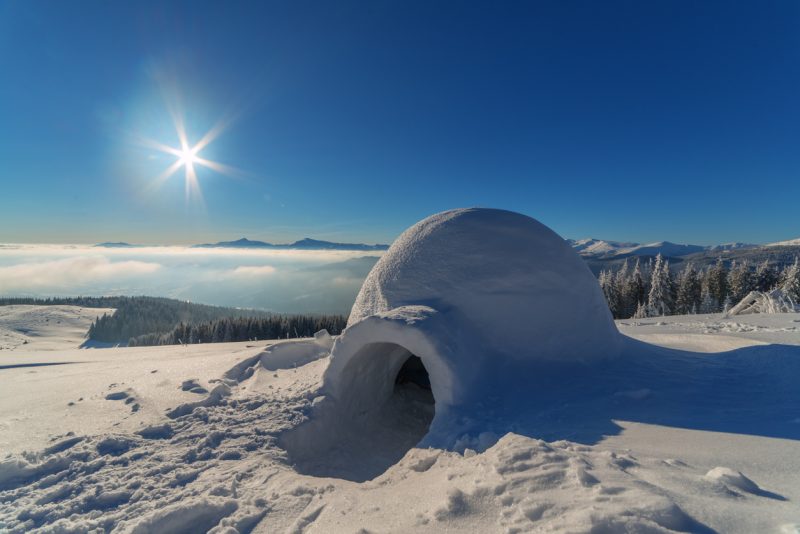
Yet the Eskimos have lived in their igloos for centuries and done so successfully in places as diverse as Siberia, Alaska, Canada, and Greenland. While these dwellings may not be the most comfortable in the world, they can be amazingly warm and comfortable if you are accustomed to the climate in which they are built.
Throughout history, different groups of people have lived in many different sorts of dwellings by utilizing the raw materials at hand. In places where wood is commonplace, wood is used for construction. In the Southwestern United States and much of Latin America, where wood is not as readily available, stucco was used and, later, cement block. For the Eskimos, the most readily available materials were ice and snow, so it shouldn’t be surprising to us that they used those materials to build their homes.
Amazing Construction
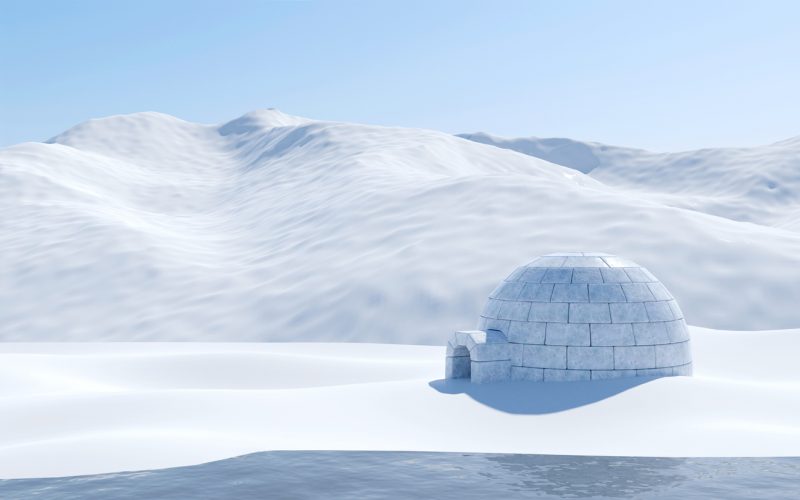
We have no way of knowing how long ago the igloo was invented, but it was first seen by outsiders in 1576 when Martin Frobisher landed on Baffin Island in his quest to find the Northwest Passage. This is nowhere near as long ago as when the Romans started using the arch, yet it appears that the invention of the igloo was independent of the arch even though they both work on the same principle.

An arch functions as a structure because the weight of it causes the cut stones to press tighter together, locking them in place. Making that arch out of blocks of hard-packed snow and making it into a 360-degree circle gives you roughly the same structure as an igloo.
However, the igloo isn’t a half-circle as many assume. It is actually a parabola: essentially the end of an oval cut off and inverted with the cut end down. This provides considerably more strength than a half-sphere would as the stresses from the melting and compacting of the snow cause compression of the snow without any tension. This means that over time the igloo actually gains strength, not loses it.
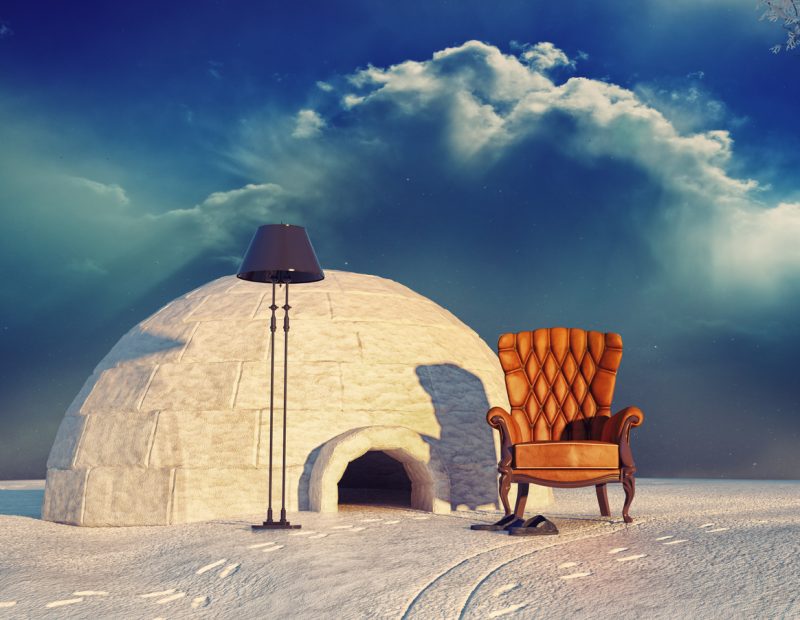
An igloo isn’t actually constructed out of courses of packed snow blocks, as one would construct a brick wall, but rather in a continuous spiral. Each block is cut, fitted, and polished to eliminate any gaps between them (a very important part of the process). As the circle is closed, the joining block overlaps the top of the first block, which has its edge flush with the level of the snow. Properly constructed, an igloo will support the weight of a man standing on it.
In some cases, a single block of ice may be inserted in the igloo, somewhere near the top, to act as a window and to allow sunlight to enter. The entrance tunnel is an important part of the design and plays a crucial role in keeping the inside of the igloo from getting too cold.
Typically, an igloo is built over a hole that has been made by cutting out blocks of snow. This creates a floor area below ground level without any extra work being required. Around this hole, the snow is left at ground level to create a sleeping platform.
Warming the Igloo
While the igloo may not be a warm shelter by our standards, to people living in a climate where temperatures typically drop to -50°F (-46°C) in the wintertime, being inside an igloo where the temperature can’t drop below 32°F probably feels almost tropical.
Water freezes to ice (or snow) at 32°F. Once frozen, it can’t get any colder. This means that a cavity inside the ice can’t get any colder as long as that cavity is totally surrounded by ice or snow. As long as nothing forces colder air into that cavity, such as wind, the temperature in it will remain the same even if the temperature outside the ice is colder.
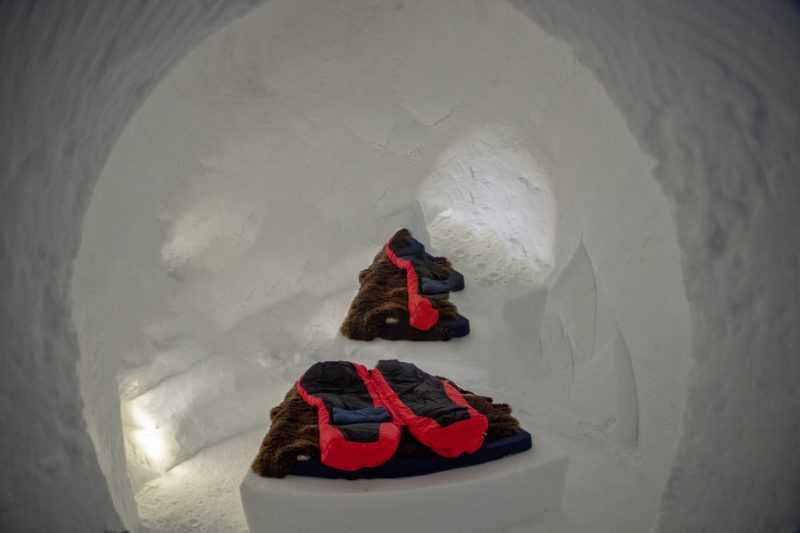
The “stack effect” helps to keep that temperature constant. This phenomenon of science tells us that lighter things rise to the top while heavier things sink to the bottom – especially in the case of liquids and gases (like air). The stack effect happens in air because as the air heats, the molecules in it move faster, actually causing it to expand. So, warm air is actually lighter than cold air.
Hence, we say that heat rises even though heat itself can move in any direction. What we really mean when we say that is that hot air will rise if there is no other force acting upon it. So, the key to keeping the temperature inside an igloo from dropping lower than 32°F is to make sure that there is no other force acting upon the air.
This is accomplished by two related mechanisms. First of all, the entrance to the igloo is below ground level and pointed in a direction that protects it from the wind. As stated earlier, the floor level is made below ground level by cutting out blocks of snow. The entryway is constructed as an arched tunnel with its ceiling at or below ground level. A caribou skin is draped across this entryway, which helps to reduce the air flow.
Due to the stack effect we were just discussing, the warm air inside the igloo will rise. Because the structure is airtight, it will not escape and cause cold air from outside to come in through the tunnel. The air stays a constant temperature no matter what is happening outdoors.
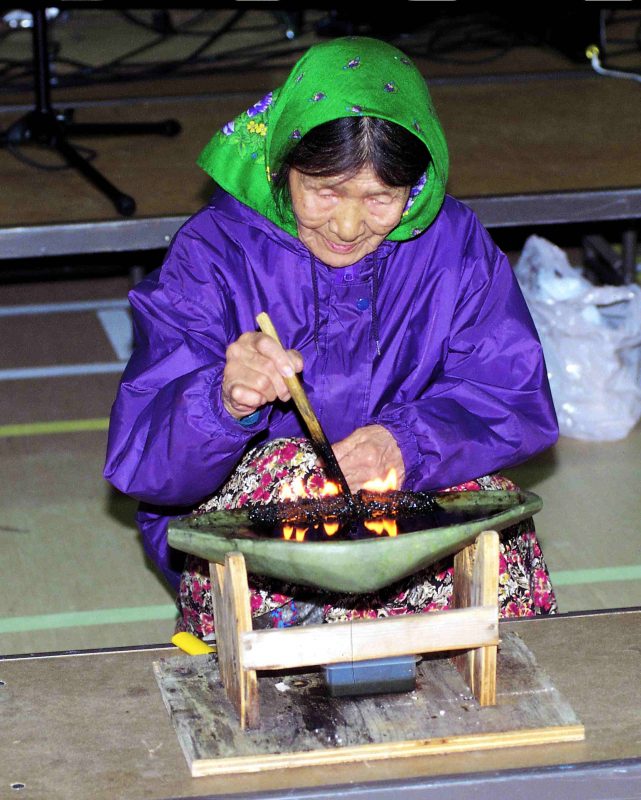
The temperature inside the igloo is actually raised a few degrees above freezing by the use of a clay lamp called a qulliq. This causes the inner surface of the igloo to melt slightly and convert into ice. As this happens, the igloo actually becomes stronger and more airtight, helping it to stay warm.
An igloo can be made even warmer by lining the inside with animal skins. This allows the internal temperature to be raised to as much as 10 – 20° above freezing (50 – 68°F). This modification to the normal design is normally only practiced by the Central Inuit, who live around the David Straight.
Inhabitants sleep on the sleeping shelf, which is at ground level and above the ceiling of the entry tunnel. While this snow is at 32°F, a bed of caribou skins and coverings of caribou skins make it quite comfortable to sleep on.
